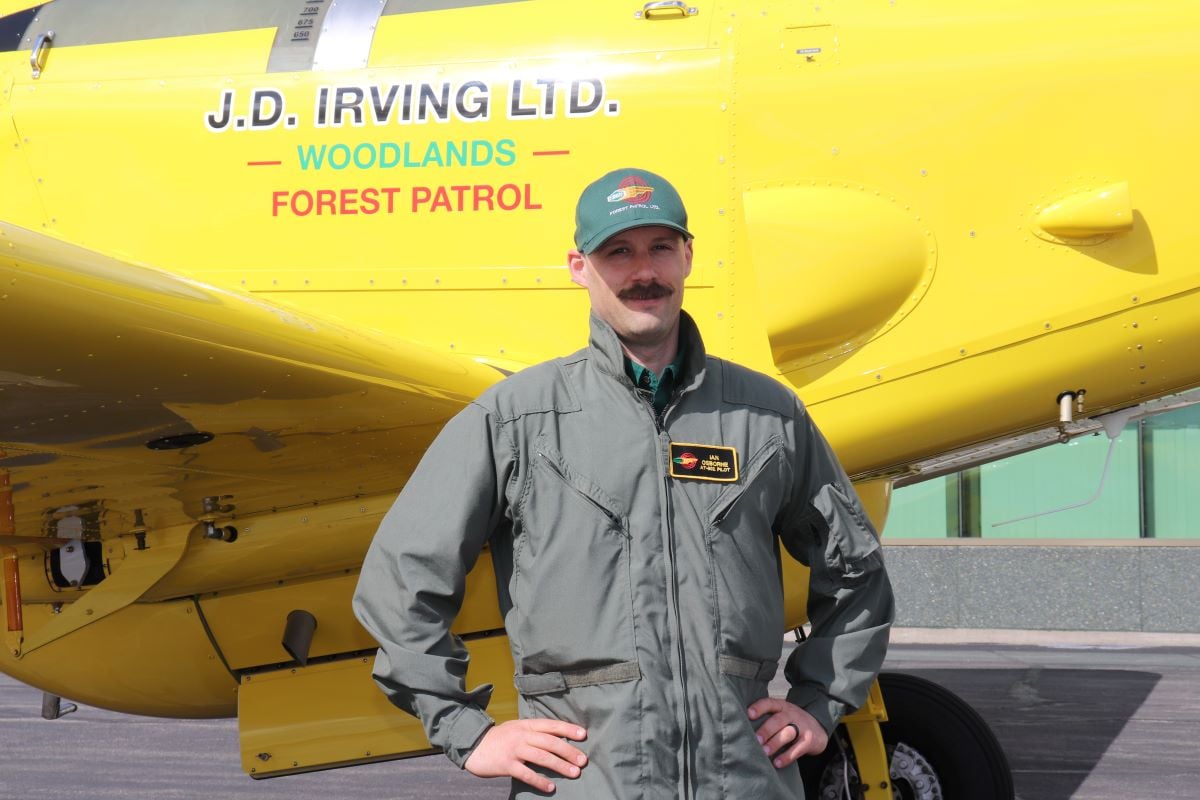Forest Patrol: JDI's aerial firefighting team
Between the month of April and October, Forest Patrol Ltd. is at the ready to protect our region's forests from wildfires.
J.D. Irving, Limited’s aerial firefighting team is composed of four fixed-wing single engine air tankers; a bird-dog plane; two helicopters; seven airplane pilots; three helicopter pilots and six private airstrips.
Among this team is Ian Osborne. As lead pilot, Osborne is the first to dispatch in the event of a fire and is the team leader. This is his fifth season with Forest Patrol, and he’s been a pilot since 2004. He was drawn to a career in firefighting while in flight school after witnessing water bombers fighting a fire near the airport. The nature of the job has continued to draw him in two decades later.
“It can be exciting,” Osborne said of the work he’s built his career around.
Preparedness is a big part of the job. Even before the start of wildfire season at the end of April, the Forest Patrol team takes part in weeks’ worth of training. And once wildfire season is underway, they run weekly fire practices to maintain readiness.
During wildfire season, Forest Patrol operates out of its main base in Juniper, N.B. and is part of JDI’s Woodlands Division’s broader monitoring, detection and early fire suppression system.
Through the months when there is a higher likelihood of fire, members of the Woodlands team monitor the weather and forest conditions to determine the day’s wildfire risk level and resourcing requirements. This could involve pausing forest operations on days of high risk.
In the event of a fire, minutes count to keep fires small and get people and resources rolling towards a fire as quickly as possible. Woodlands has a central dispatch that sends out a fire alarm to all division staff through their mobile phones in cases of a potential or confirmed fire on JDI-managed land. More than 1,000 hours of staff training means that when the fire alarm goes off, the response begins within minutes.
Over at the base in Juniper, when a call comes in, Forest Patrol can be ready to launch in 15 minutes. With planes reaching speeds of 175 miles per hour, the crew can then be at the site of a fire anywhere in the province of New Brunswick in less than 60 minutes.
First on site is the bird-dog aircraft, which makes an initial assessment and orbits the site as it communicates with the ground crew, relaying information to the four tanker aircraft.
“As we enter the working area, we do what we call a stack formation where we’re stacking 500 feet above each other, orbiting the fire,” Osborne said.
The aircraft can carry more than 6,500 pounds of water, foam or long-term fire retardant. Depending on the nature of the fire, the Forest Patrol crew can adapt their response from a direct attack of dropping water or foam directly on a fire or the more common indirect approach of dropping long-term fire retardant around the fire’s perimeter to create a fire break.
Investing in resources and training is an important part of JDI’s approach to wildfire resiliency in the working forest. Everyone has a role to play in reducing the risk of fires. Prevention measures like not leaving a fire unsupervised, paying attention to fire risk notices and weather conditions, sticking to trails when in the woods and not driving ATVs over dry brush/grass can go a long way in preventing fires from starting.
